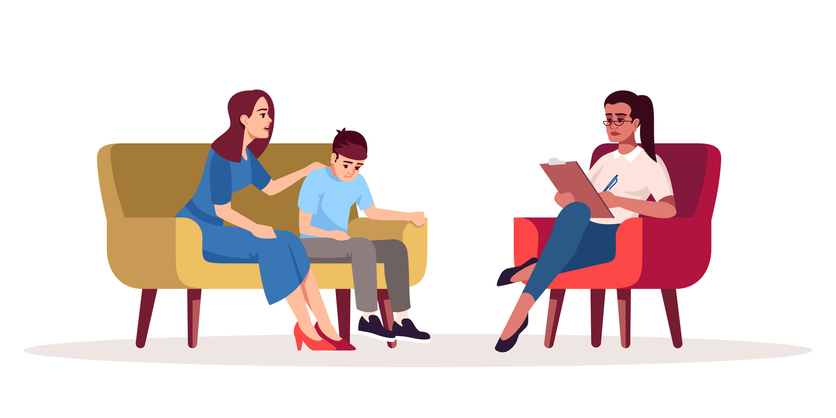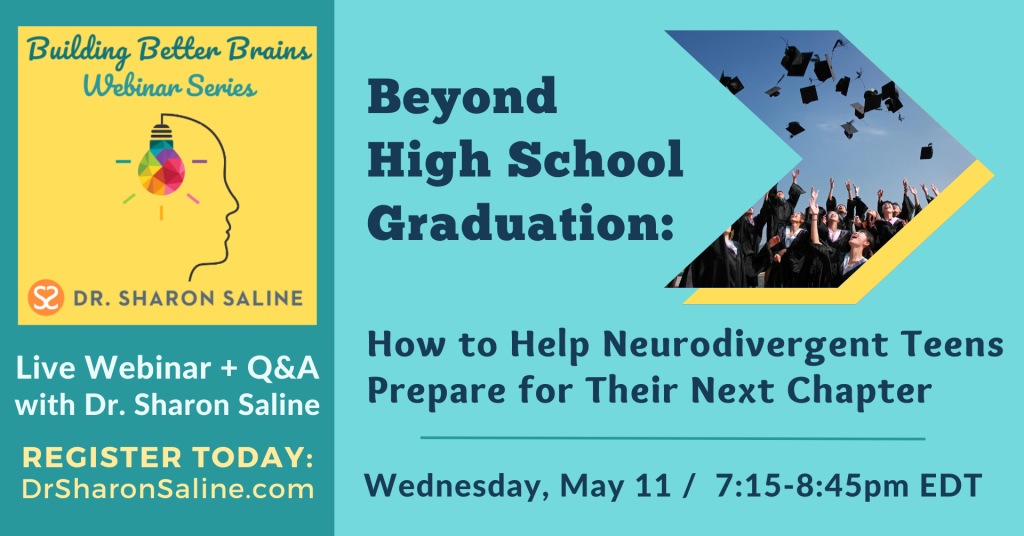Therapy for ADHD: 5 Tips for Finding the Right Therapist for a Child, Teen or Adult with ADHD
 Recently, I received an email from a mom whose 11 year old son was recently diagnosed with ADHD and dyslexia. She said, “I am trying to find someone for him to speak with. What should I be looking for in a therapist? I want to find someone that can explain to him what is going on in his brain and that there is nothing wrong with him. I’m not sure where to begin.” This is such an important issue, so I decided to write this article to help other parents and adults who are seeking therapy for ADHD. If you are looking for guidance and advice on how to find the best therapist match for you or your child, these tips are for you.
Recently, I received an email from a mom whose 11 year old son was recently diagnosed with ADHD and dyslexia. She said, “I am trying to find someone for him to speak with. What should I be looking for in a therapist? I want to find someone that can explain to him what is going on in his brain and that there is nothing wrong with him. I’m not sure where to begin.” This is such an important issue, so I decided to write this article to help other parents and adults who are seeking therapy for ADHD. If you are looking for guidance and advice on how to find the best therapist match for you or your child, these tips are for you.
Taking the first step: acknowledgment
The first important step towards finding a therapist is acknowledging that you or your child need more support to manage work, school or daily life events. You may notice more times of sadness, anxiety or frustration. Or, you may be receiving feedback from the school that your child or teen is wrestling with completing schoolwork, making and maintaining friendships or having emotional outbursts. If you are an adult, you may find that you can’t make desired changes in your life. Or, perhaps you are using drugs or alcohol to cope with issues, or you feel lonely, disconnected and bad about yourself. Finding someone to talk to who knows about ADHD, understands executive functioning struggles, empathizes with your situation and works with you to find solutions can make things easier on all fronts.
What to look for in a therapist for ADHD
Your goal is to choose a therapist who doesn’t judge you or make you feel abnormal, but rather expresses empathy, listens to what you say, pays attention to nonverbal messages, and offers useful cognitive-behavioral, mindfulness interventions to improve daily functioning. Work with someone who can explain how your brain works and why self-regulation, disorganization, focus and initiation are common challenges when you live with an ADHD brain.
Knowledge and understanding about ADHD and co-occurring conditions
 Therapy for ADHD, whether for children, teens or adults, includes the assessment, diagnosis and treatment of ADHD. However, it also addresses the mental health conditions that travel with it. Whether it’s anxiety, depression, an eating disorder, bipolar disorder, trauma, oppositional defiant disorder, self-harming behaviors or substance abuse, a well-trained therapist will differentiate between these issues. They will also use a variety of evidence-based modalities to create appropriate interventions.
Therapy for ADHD, whether for children, teens or adults, includes the assessment, diagnosis and treatment of ADHD. However, it also addresses the mental health conditions that travel with it. Whether it’s anxiety, depression, an eating disorder, bipolar disorder, trauma, oppositional defiant disorder, self-harming behaviors or substance abuse, a well-trained therapist will differentiate between these issues. They will also use a variety of evidence-based modalities to create appropriate interventions.
A licensed therapist
Therapists are licensed by the state after years of training and internships. They are legally bound to adhere to state ethical and practice regulations. They’re also trained to consider issues of race, gender identity, sexual orientation, socioeconomic status and religion that affect identity development, lived experience and emotional and behavioral management. Typically, they look at a person with a wide lens, which includes environmental, family and couples’ issues. In addition, they examine connections between feelings, thoughts, behavior and bodily health.
A seasoned therapist
A seasoned therapist takes in the whole person: what’s happening psychologically, relationally, and in their environment. Instead of asking, “What’s wrong with this child? Or what’s wrong with you,” they wonder about what’s happened in your life that has brought you here. They’re curious about what’s going on in your present day experiences. They also plan how you can both work together to create a future that fits you and supports your authenticity.
What to expect in therapy for ADHD management and support
Although a crisis can be one type of motivator for wanting a therapist, some people seek therapy for ADHD in the pursuit of well-being and more satisfying relationships. Either way, when working with a child, teen or an adult with ADHD, the therapist has to do an intricate dance: They must move artfully between examining feelings, thoughts and behaviors while collaborating on interventions with the client.  Interventions take aim at issues of daily living that perpetuate the problems they came in for. In order for healing and change to occur, there must be a practical aspect to the work that improves executive functioning challenges, builds self-esteem, improves resilience and lowers stress. In addition, when working with children and teens, there has to be a family component to the therapy since kids don’t live in a petri dish. They need their parents to help them develop the skills they need for maturity and independence. It’s important to get a sense of what this piece of the work would look like.
Interventions take aim at issues of daily living that perpetuate the problems they came in for. In order for healing and change to occur, there must be a practical aspect to the work that improves executive functioning challenges, builds self-esteem, improves resilience and lowers stress. In addition, when working with children and teens, there has to be a family component to the therapy since kids don’t live in a petri dish. They need their parents to help them develop the skills they need for maturity and independence. It’s important to get a sense of what this piece of the work would look like.
Therapy for ADHD: 5 tips for finding the RIGHT therapist
To find a therapist who best fits your needs requires a thorough vetting process. Be prepared to interview a few people before finding the one who clicks. Follow these tips to help you along the way:
1. Reflect on what you are looking for
Forget about being shy. You are shopping for a service. Decide in advance how many people you are willing to try out. Do you want someone who is quieter and more introverted, or someone more dynamic and actively engaged? Male or female? Older or younger? Be precise about what you want.
2. Do your homework
Get referrals from your physician, friends or colleagues before talking with your insurance company. Make sure whoever you see takes your insurance, and that your insurance company has approved you to meet with a few different people. You may also want to be able to interview one or two people before making a decision.
3. Conduct a phone assessment before meeting
You want to get a sense of what therapy would be like with them. Do they use the past to help you master troubling issues in the present? What types of interventions will they use to assist you and/or your child in applying and practicing what we discuss in session? Make sure that you are also clear about the logistics of therapy, including their cancellation policy and financial arrangements. Ask questions such as:
- What type of training have you received about ADHD?
- How many clients with ADHD have you worked with?
- How would you describe your work?
- Do you think you are an active participant who speaks freely, or more of a listener who speaks occasionally?
- Do you coordinate with other professionals that might be involved?
- When and how do you elicit feedback?
4. Inquire about collaborating with coaches
Coaching can dovetail nicely with therapy for ADHD. For example, your son may be working on social anxiety and making friends in therapy. At the same time, he might be getting help from a coach for strategies to complete homework without tears.  Some therapists incorporate coaching practices into their work with clients by focusing on action-oriented techniques and forward-looking goals. They may apply classic cognitive-behavioral tools, such as making lists, trial-and-error experiments, or giving an assignment for the family to do in-between sessions. Coaches, on the other hand, are not supposed to use ‘therapeutic’ tools, techniques or interventions for the treatment of a mental health diagnosis. This is because they are not a licensed therapist. When a therapist and a coach work with the same client, it’s best if they coordinate what they’re doing and clarify goals with each other. This way, boundaries can be kept clean, and progress can be monitored more effectively.
Some therapists incorporate coaching practices into their work with clients by focusing on action-oriented techniques and forward-looking goals. They may apply classic cognitive-behavioral tools, such as making lists, trial-and-error experiments, or giving an assignment for the family to do in-between sessions. Coaches, on the other hand, are not supposed to use ‘therapeutic’ tools, techniques or interventions for the treatment of a mental health diagnosis. This is because they are not a licensed therapist. When a therapist and a coach work with the same client, it’s best if they coordinate what they’re doing and clarify goals with each other. This way, boundaries can be kept clean, and progress can be monitored more effectively.
5. Give the therapist a chance, and trust your instincts.
 The first few sessions of therapy are to get to know each other and see if you are a good fit. Prepare to share information about yourself, and ask them any questions you may have about them and their work. Meet alone with the therapist once or twice before introducing your child to provide adequate background information. Then, if necessary, go with them on their first session to facilitate introductions and discuss why you are there. If things seem especially awkward, and your gut tells you to continue looking, follow your instincts. Otherwise, if there’s a natural flow of conversation, solid listening, pertinent questions and a positive connection, you might find the session going well. If that’s the case, try returning for a second session and embark on the therapeutic process.
The first few sessions of therapy are to get to know each other and see if you are a good fit. Prepare to share information about yourself, and ask them any questions you may have about them and their work. Meet alone with the therapist once or twice before introducing your child to provide adequate background information. Then, if necessary, go with them on their first session to facilitate introductions and discuss why you are there. If things seem especially awkward, and your gut tells you to continue looking, follow your instincts. Otherwise, if there’s a natural flow of conversation, solid listening, pertinent questions and a positive connection, you might find the session going well. If that’s the case, try returning for a second session and embark on the therapeutic process.
Read more blog posts:
- ADHD Misconceptions: How To Respond To 4 Damaging False Beliefs And Assumptions About ADHD
- The 4 Steps to New Habits with ADHD: Taking control of your routines to better meet your goals
- Emotional Wellness Strategies for Women with ADHD: How to reduce self-criticism & build self-confidence
Handouts, Webinars & More in Dr. Saline’s Store:
- ADHD Webinar Recording: “Beyond High School Graduation: How to help neurodivergent teens prepare for their next chapter”

